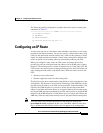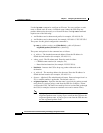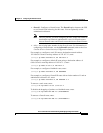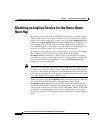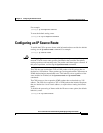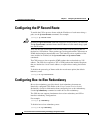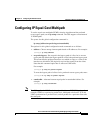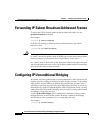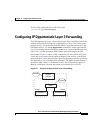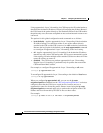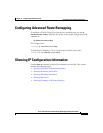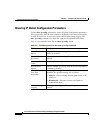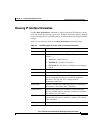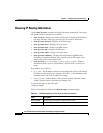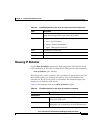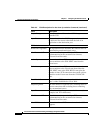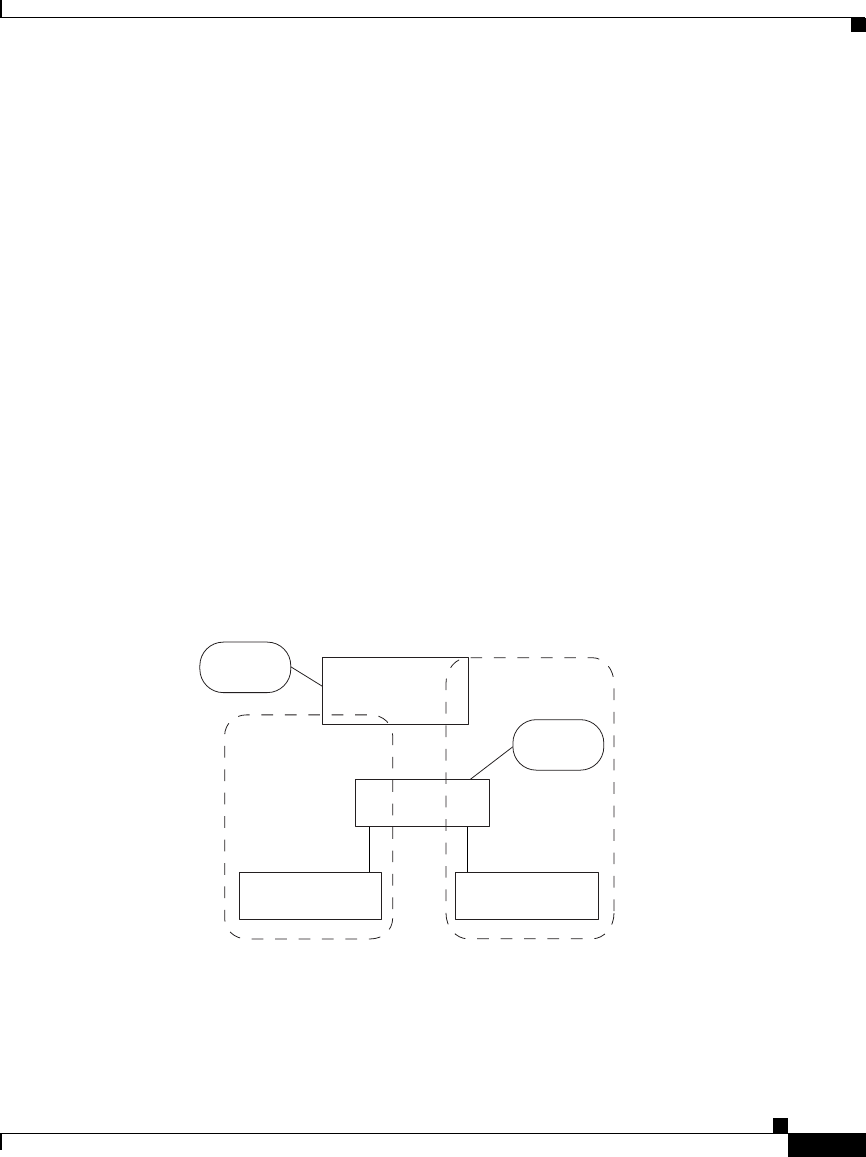
6-11
Cisco Content Services Switch Routing and Bridging Configuration Guide
OL-8241-02
Chapter 6 Configuring the Internet Protocol
Configuring IP Opportunistic Layer 3 Forwarding
To restore the default behavior of the CSS, enter:
(config)# no ip uncond-bridging
Configuring IP Opportunistic Layer 3 Forwarding
The CSS opportunistic Layer 3 forwarding feature allows the CSS to reduce the
number of network device hops for certain packets or flows. The CSS forwards
packets at Layer 3 if the destination MAC address in the Ethernet header is the
CSS MAC address. Use the ip opportunistic command to enable opportunistic
Layer 3 forwarding and allow the CSS to make Layer 3 forwarding decisions even
if the Layer 2 packet destination MAC address does not belong to the CSS.
For example, Figure 6-1 shows a CSS connected to VLAN1 and VLAN2. Each
VLAN has an end station and an uplink to Router1. End stations A and B both
point to Router1 as their default router. When End Station A transmits a packet to
End Station B, it uses its default route to Router1. The packet contains Router1’s
destination MAC address. A traditional Layer 2 device forwards the packet to
Router1, and Router1 forwards the packet to End Station B on VLAN2.
Figure 6-1 Example of Opportunistic Layer 3 Forwarding
End Station A
Subnet
VLAN2
VLAN1
Router1
(default)
End Station B
CSS
Internet
49383



